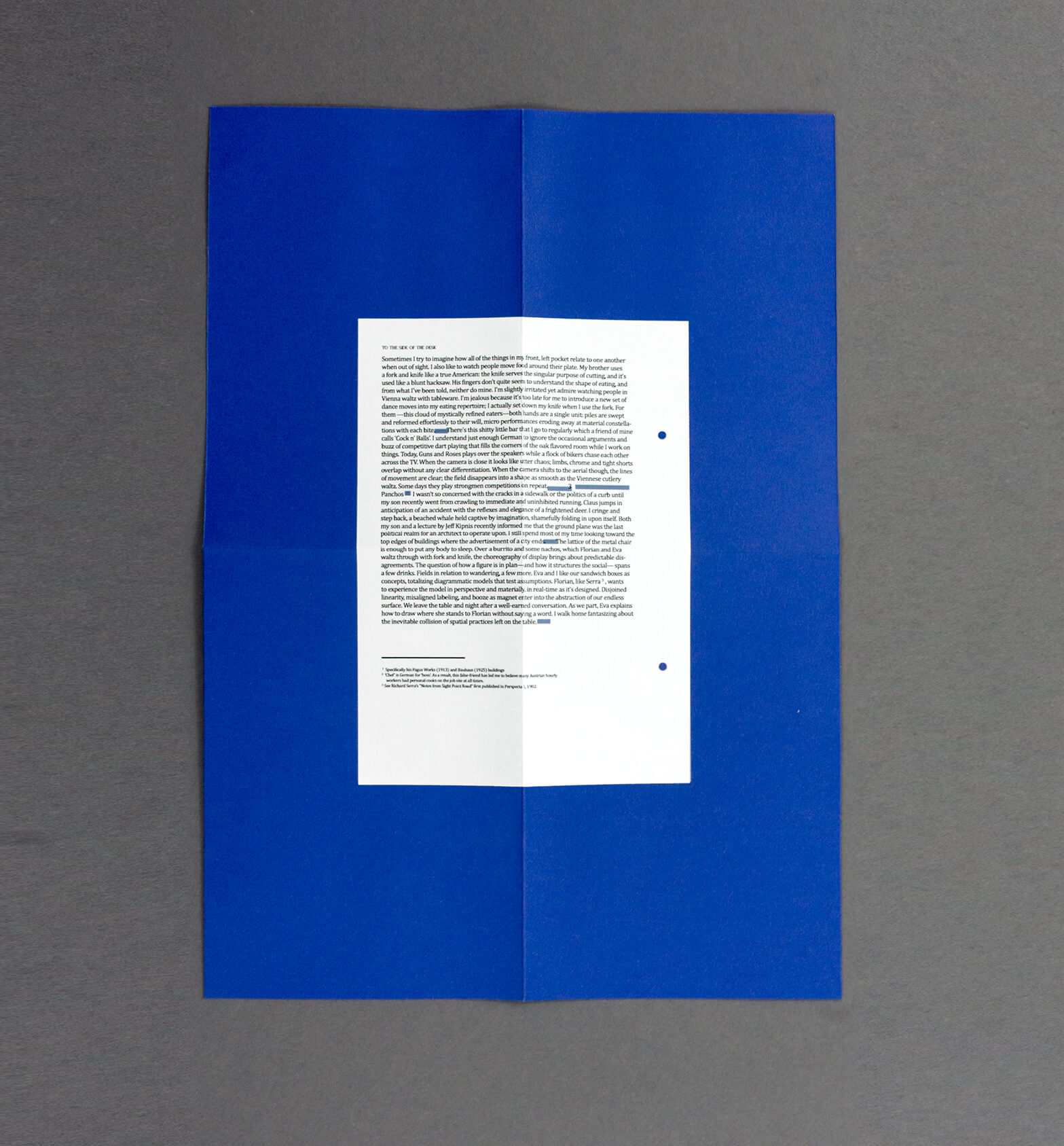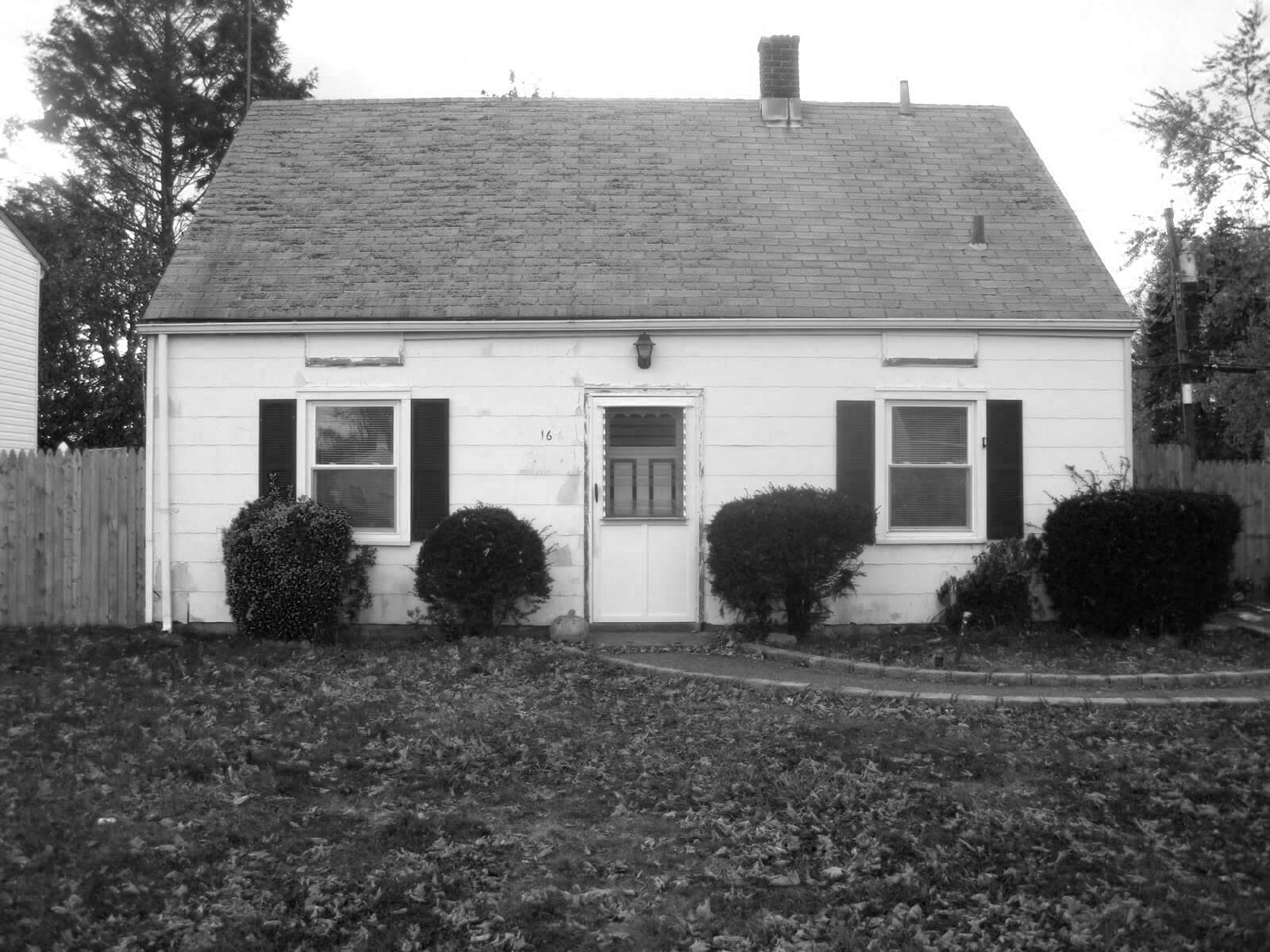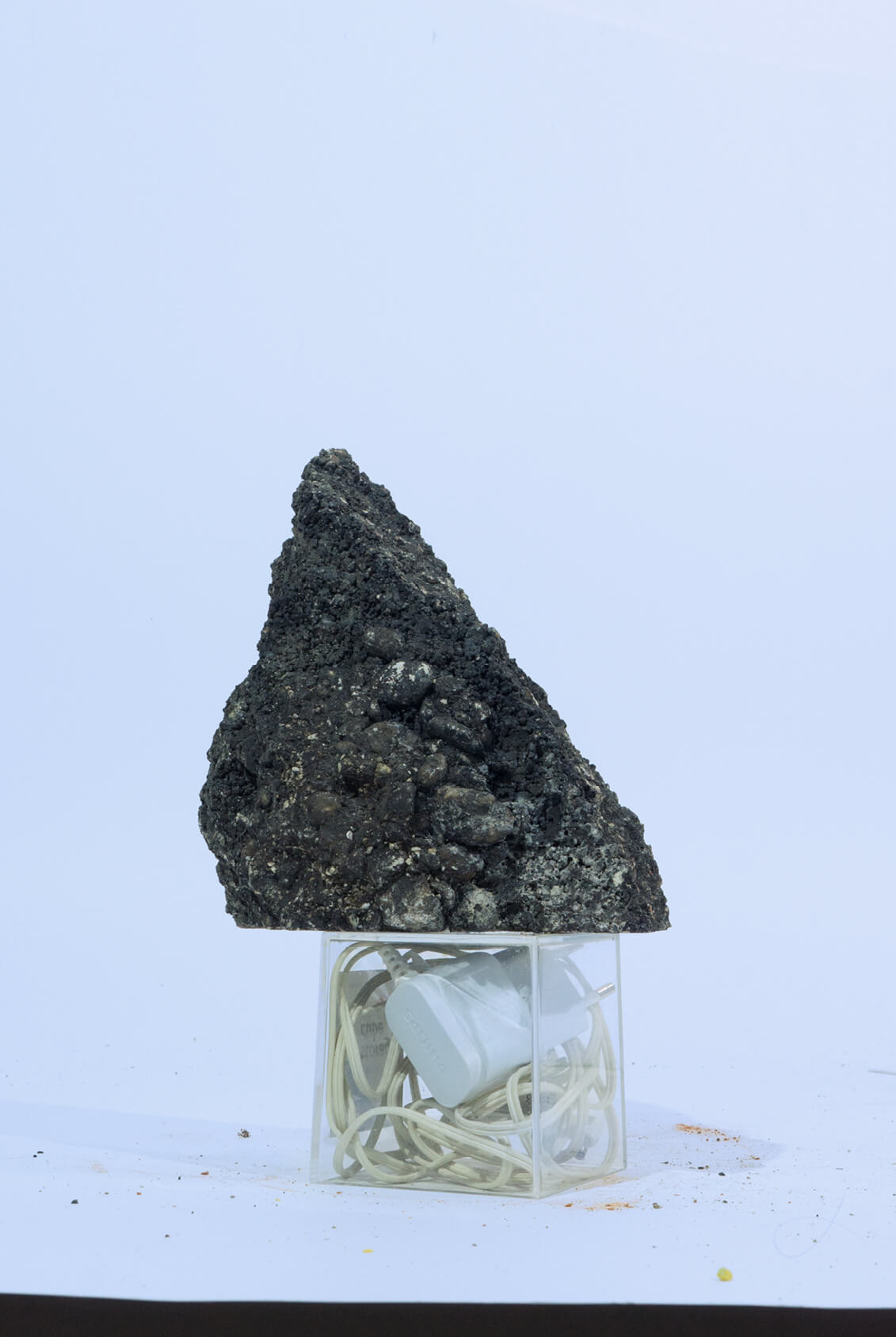>
To the Side of the Desk
Year
***last edited 24 01 2018
Location
Academy of Fine Arts / Vienna, AT
Exhibition
Silver Linings
Format
Publication Text
Material
Words
Dimensions
8,058 Characters Including Spaces
Curator
Eva Sommeregger & Florian Schafschetzy
Publisher
Silver Linings
edited by Eva Sommeregger, Florian Schafschetzy and Mike Aling
(Vienna: Breite Gasse Publishing, 2015)
Former Apartment _ Our couch has mustard green cushions that slip out from behind your back when you try to sit too comfortably. They slide behind the frame like a hotdog submerged in ketchup, wedging themselves in-between the wall and asking your spine for an almost unreasonable amount of attention. Its arms are Danish, gently stained, and terminate in a shape that feels like tiny human palms had rubbed them into place. Multi, my mother-in-law, had bought the furniture some time before the curtain had been raised, and while I respect its intellectual prowess it somehow leaves me unsatisfied. ---------------------------Eva’s eyes are alert. When she sits it's clear that her body hasn’t given up on the idea of moving again. Our couch clearly poses her no threat. Her limbs dangle from her tall frame but hold her midsection in place with decided purpose. She brings a box of well-manicured sandwiches, scolds Florian in German when he wants to eat one — assuming I won't understand — then unpacks a folder with printed matter. In between all of this some niceties are exchanged about family, work or the weather, while sandwiches constructed from the golden section are swallowed into the conversation. --------------------------- --------------------------- --------------------------- The Trzesniewski Company is the Gropius [1] of sandwiches. Open-faced, precise, thin layers of color which smell as terrifyingly modernist as they look. After being packed into boxes with an acute respect for voids, the compositions remain intact even when shaken by circumstance. I recently went there to ogle and buy these gross local delicacies for Claus’s birthday. Although probably detailed within some thick corporate binder circulating throughout central Europe — with diagrams of the 9-square grid in tow — the packing process appeared to be inspired by Busby Berkeley choreography routines. Growing up, my mom's sculptural sensibility was to cut my peanut butter and jelly sandwiches into rectangles. Secretly though, I always wanted the hard-edged triangles I saw others eating, thinking that somehow their fail-proof symmetrical division would also bring about emotional order. ---------------------------After Claus joins us in the live / work / play / eat / room, Eva presents a well-manicured packet that seems to be inspired by the sandwiches: aligned edges, clear grid, elegantly proportioned absences in-between shapes, distinct flavors partitioned by material difference. She passes Claus and I each a short sequence of images accompanied by a text explaining their intentions for the Silver Linings show. Florian preemptively challenges the language of the text, casting our readings in a gentle tone of doubt. Written in a manner that is mostly aimed at securing both a physical and intellectual venue, the text addresses addiction. Architecture, they argue, is a question taking place to the side of your desk. It's what happens when your chef [2] has their back turned or is in the other room trying to reconcile their artistic impulses with the services they just mistakenly committed themselves to.
Perle _ The conversation begins and most likely ends with the cellophane hanging from Florian’s cigarettes. When he opens a new pack, he slides the wrapper to the bottom, pinches it slightly and then turns it upside down to stand on itself. Once pinched, the brittle, transparent wrapper becomes structural. A pocket-sized Unite d’ Habitation, the printed red cardboard hovers above the datum of the table almost impossibly. For Eva this gesture goes unnoticed. It’s a routine act that falls away from attention somewhere between watching your partner button a shirt, fold a towel, or place groceries into a bag. To me though, he’s a dinner table magician, casually revealing his addiction to editing space. I encourage documentation and insist upon the artifact being displayed in the show we met to talk about. He immediately demolishes this pocket building upon hearing this, which is understandable because he wants a cigarette. --------------------------- ---------------------------Recently we moved apartments. When we began trying to fit our material beings into transportable volumes I was diligent, looking for adjacencies, stacking and tucking things so to be as ordered as possible. After I'd grown tired of it and wanted out of the process, I quit treating it like an exercise in urban planning and submitted to piling. Well after the move though, I still find myself getting annoyed at the boxes I neglected; their objects seem to suffer. --------------------------- -------------Sometimes I try to imagine how all of the things in my pockets relate to one another when they’re out of sight. I also like to watch people move food around their plates. My brother uses a fork and knife like a true American: the knife serves the singular purpose of cutting, and it’s used like a blunt hacksaw. His fingers don't quite seem to understand the shape of eating, and from what I've been told, neither do mine. I’m slightly irritated yet admire watching people in Vienna waltz with tableware. I'm jealous because it's too late for me to introduce a new set of dance moves into my eating repertoire; I set down my knife when I use the fork. For them — this cloud of mystically refined eaters — both hands are a single unit: piles are swept and reformed effortlessly to their will, micro performances eroding away at material constellations with each bite. ---------------------------There's this shitty little bar that I go to regularly which a friend of mine calls ‘Cock n’ Balls’. I understand just enough German to ignore the occasional arguments and buzz of competitive dart playing that fills the corners of the oak flavored room while I work on things. Today, Guns and Roses plays over the speakers while a flock of bikers chase each other across the TV. When the camera is close it looks like utter chaos; limbs, chrome and tight shorts overlap without any clear differentiation. When the camera shifts to the aerial though, the lines of movement are clear; the field disappears into a shape as smooth as the Viennese cutlery waltz. Some days they play strongmen competitions on repeat.
Panchos _I wasn't so concerned with the cracks in a sidewalk or the politics of a curb until my son recently went from crawling to immediate and uninhibited running. Claus jumps in anticipation of an accident with the reflexes and elegance of a frightened deer. I cringe and step back; a beached whale held captive by an imagination that shamefully folds in upon itself. Both my son and a lecture by Jeff Kipnis recently informed me that the ground plane is the last and possibly most pressing political act. I still spend most of my time looking toward the top edges of buildings where the advertisement of a city ends though. --------------------------- ---------------------------The lattice of the metal chair at Panchos is enough to put anybody to sleep. Over a burrito and some nachos, which Florian and Eva waltz through with fork and knife, the choreography of display brings about predictable disagreements. The question of how a figure is in plan — and how it structures the social — spans a few drinks. Fields in relation to wandering, a few more. Eva and I like our sandwich boxes as concepts, totalizing and diagrammatic models that test assumptions. Florian, like Serra [3], wants to experience the model in perspective as material, and in real-time as it’s designed. Disjoined linearity, misaligned labeling, and the magnetism of booze enter the stage of our table. We pay, then leave the table and night after what felt like a well-earned conversation. As we part, Eva explains how to draw where she stands to Florian without saying a word. I walk home fantasizing about the inevitable collision of spatial practices left on the table. --------------------------- ---------------------------
[1] Specifically, his Fagus Works (1913) and Bauhaus (1925) buildings.
[2] In German, ‘Chef’ translates to ‘boss’. This false-friend has led me to believe many Austrians have personal cooks on the job site at all times.
[3] See Richard Serra’s ”Notes from Sight Point Road” first published in Perspecta1, 1982.


